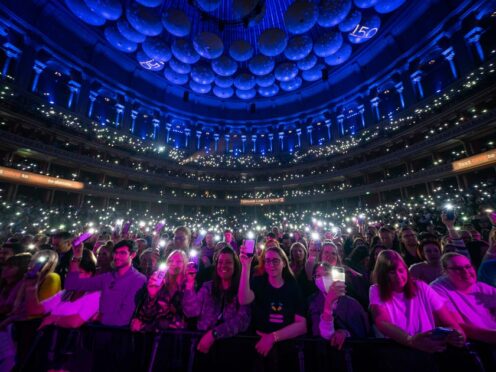The average time spent listening to music globally has risen in the past year, according to a report.
Listeners spent 20.1 hours a week playing their favourite music, up from 18.4 hours in 2021, the International Federation of the Phonographic Industry (IFPI) said.
This is equivalent to listening to an extra 34 three-minute songs weekly.
In 2019, the report indicated people were listening to 18 hours of music a week on average.
It was not carried out in 2020 due to the pandemic.
The IFPI’s annual Engaging With Music report suggests people on average use at least six different methods to engage with music and listen to eight or more different genres on average.
Some 46% of respondents pay for audio streaming services, such as Spotify and Apple Music, which offer on-demand access uninterrupted by adverts.
The UK was the country with the second highest engagement with paid subscription services (52%), just behind Sweden at 56%.
The US and Germany were in joint third both with 51%.
Music has also become key to how people use short-form video apps such as TikTok.
The report indicates some 63% of all time spent on such platforms is on videos where music plays a central role.
People also listen to a diverse range of music genres, with the IFPI noting that more than 500 different styles were identified by at least one respondent, including Brazilian Sertanejo, Disco-Polo from Poland and an Indonesian folk music called Dangdut.
Unauthorised access to unlicensed music also remains prevalent, with nearly one in three respondents (30%) using unauthorised or unlicensed methods to listen to or download music.
Fieldwork was conducted in June and July 2022 across 22 countries with more than 44,000 respondents aged between 16 and 64.
Panels were nationally representative in each country.
Frances Moore, IFPI chief executive, said: “This year’s Engaging with Music report paints a fascinating picture of how fans around the globe listen and engage with music today.
“It shows the results of record companies’ partnership with artists and their work to harness new technologies to connect fans with their favourite tracks in even more ways.
“We continue our work to ensure that those seeking to profit from unlicensed and unauthorised music can’t threaten the vibrancy of a music ecosystem that is essential to artists and fans.
“Engaging with Music 2022 serves as a healthy and celebratory reminder of the true global importance and value of music and the need to protect and support it.”
